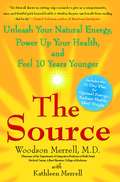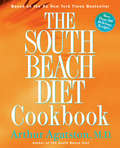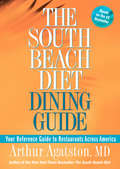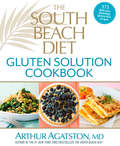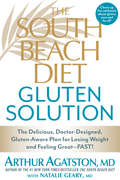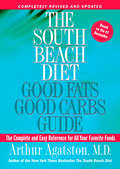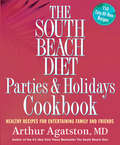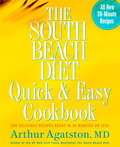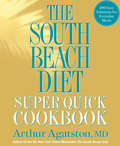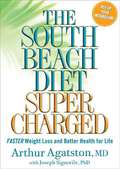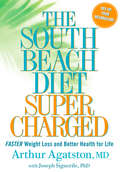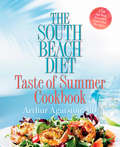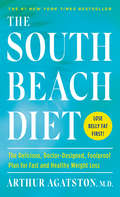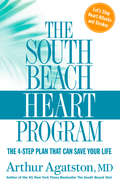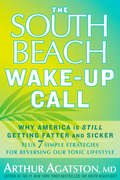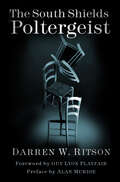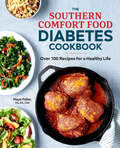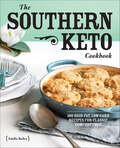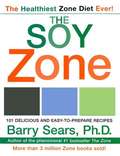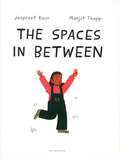- Table View
- List View
The Source: Unleash Your Natural Energy, Power Up Your Health, and Feel 10 Years Younger
by Woodson Merrell"Why do I feel so tired and drained?" You're not alone if you're constantly asking yourself this question. Exhaustion is epidemic in America and "lack of energy" one of the top five complaints to doctors nationwide. This is because vast numbers of people have lost their connection with the inner energy that is the source of healing and radiant vitality. But now Dr. Woodson Merrell shows us that it doesn't have to be this way. One of the nation's preeminent integrative medicine specialists, Dr. Merrell tackles this problem head on with his long-awaited first book, offering a way to break the fatigue cycle and achieve the abundant energy that leads to true health. Here is his uplifting, proven program -- a breakthrough, six-step, 21-Day Plan for how you can become an "energy creator" rather than an "energy consumer." The Source is the most comprehensive, authoritative, and cutting-edge health guide available on how to power up your energy, your health, and your life. In his more than twenty years of medical practice, Dr. Merrell has discovered core concepts about energy that draw on both Western and Eastern medical knowledge and healing practices. His plan has helped to transform thousands of people's lives physically, mentally, and spiritually to allow them to feel better than ever before. With myriad paths to energy and wellness, Dr. Merrell's plan gives you all the tools you need -- including relaxation practices, a sustainable exercise program, a protocol for detoxifying your body, and organic menus and recipes for each day of the 21-Day Plan. Dr. Merrell is among the first physicians to give a blueprint for energy generation, providing an accessible, clear solution for living, looking, and feeling better. As you undertake his program, you will tap into "The Source" of life's essential force -- energy -- and increase yours as you experience incredible changes in mind, body, and spirit. You will power up your body and wake up to life.
The Sourdough School: The ground-breaking guide to making gut-friendly bread
by Vanessa Kimbell'Master the art of sourdough with Vanessa and you will learn how to look after your own gut microbes and health.' - Tim Spector, author of The Diet Myth At her renowned Sourdough School, Vanessa has taught countless students the secrets of this healthy, more easily digestible bread, and now she has compiled her teachings for the home baker. From creating your own starter from scratch, you'll then move on to basic breadmaking techniques, before progressing to using sprouted grains and experimenting with flavours to produce Fig and Earl Grey and Cherry Plum loaves. With step-by-step photography, detailed instructions, specialist advice and Vanessa's indispensable encouragement, The Sourdough School celebrates the timeless craft of artisan baking.
The South Beach Diet Cookbook: More than 200 Delicious Recipies That Fit the Nation's Top Diet
by Arthur AgatstonThe long-awaited cookbook is here! Great food that's good for you--that's the foundation of the South Beach Diet and the reason millions of people around the world have adopted it as their lifelong eating plan, shedding unwanted pounds in the process. Created by leading Miami cardiologist Arthur Agatston, M.D., the diet emphasizes good fats and good carbohydrates, the kind that stave off cravings for unhealthy sugary food and promote long-term weight loss. It's not "diet" food--it's satisfying, flavorful dishes that are good for your health and your waistline. Whether you're already a South Beach Diet success story or brand-new to the program, you'll find a wealth of inspiration in The South Beach Diet Cookbook to keep you on track without feeling deprived. The recipes are simple enough to make every day but delicious enough to serve on any occasion: Oatmeal Pancakes, Buttermilk Salmon Chowder, Caribbean Baked Chicken with Mango, Grilled Filet Mignon with Roasted Garlic Chipotle Pepper Chimichurri, Mexican Lasagna, Sage and Rosemary Pork, Red Snapper with Avocado Salsa, Thai Vegetable Stir-Fry, and Chocolate Pie with Crispy Peanut Butter Crust. Each recipe is marked "Phase 1," "Phase 2," or "Phase 3," so you'll know immediately where it falls in the diet; there are also 25 all-new recipes from the top chefs and restaurants in Miami. Illustrated with 50 full-color photographs and packed with extras like shopping lists and a pantry guide, The South Beach Diet Cookbook is an essential addition to your kitchen shelf.
The South Beach Diet Dining Guide: Your Reference Guide to Restaurants Across America
by Arthur AgatstonAmericans spend $440 billion eating out at restaurants each year, and as the American culture is increasingly on the go, we let diets fall by the wayside as we fuel up on fast food and convenience foods. Now, with The South Beach Diet Dining Guide, Dr. Arthur Agatston will give dieters a trusted resource to keep them on track wherever they go.The first part of the book features listings of over 75 of the most popular chain and family restaurants in America, including mall and airport listings. For each entry, the book provides an editorial overview and specific menu recommendations and nutritional information. The South Beach Diet Dining Guide focuses on what you can eat, not what you should avoid! The second part of the book covers suggestions on what to eat from different ethnic food categories, such as French, Italian, Mexican, Spanish, Indian, and Japanese.A bonus section for travelers includes an editorial overview and menu suggestions from South Beach-friendly restaurants in 15 of the most well-traveled cities: New York; Los Angeles; San Francisco; Boston; Chicago; Atlanta; Dallas; Cleveland; New Orleans; Kansas City; Minneapolis; Miami; Washington, DC; St. Louis; and Las Vegas.
The South Beach Diet Gluten Solution Cookbook: 175 Delicious, Slimming, Gluten-Free Recipes
by Arthur AgatstonWith The South Beach Diet, Dr. Arthur Agatston ended the low carb versus low fat debate and educated the country about healthy carbs and fats. In The South Beach Diet Gluten Solution, he cleared up the confusion surrounding gluten and helped people find their own gluten threshold (what he calls becoming gluten aware). Now he clarifies another matter: Gluten-free eating does not mean you have to sacrifice flavor or good nutrition.The South Beach Diet Gluten Solution Cookbook makes creative use of gluten-free ingredients in 175 recipes that will please even the most discerning palates. Mouth-watering dishes like Bacon and Pecan Breakfast Biscuits, Vegetable Quiche with Spinach Crust, Johnnycake Chicken Sandwiches, Shrimp and Chicken Pad Thai, Summer Berry Tart, and Cashew-Butter Cookies will more than satisfy the heartiest (and healthiest) of appetites. And with more than half of the recipes taking 30 minutes or less from start to finish, this book is perfect for the busiest of cooks.Unlike the recipes found in many gluten-free cookbooks, those in The South Beach Diet Gluten Solution Cookbook are free of highly refined flours, sugars, and artery-clogging saturated fats—but are still packed with plenty of flavorful ingredients. Even readers who aren't gluten-free 100 percent of the time will enjoy reaping the health rewards of these diet-friendly and delicious dishes.
The South Beach Diet Gluten Solution: The Delicious, Doctor-Designed, Gluten-Aware Plan for Losing Weight and Feeling Great--FAST!
by Arthur Agatston Natalie GearyToday, supermarkets have dedicated gluten-free aisles, restaurants highlight gluten-free dishes on their menus, and millions of people have cut gluten out of their diets in the hopes of boosting health and losing weight. But despite all the attention, gluten confusion still reigns.Enter cardiologist Arthur Agatston, MD, author of the groundbreaking The South Beach Diet. With that book, Dr. Agatston ended the diet debates and cleared up the high-carb versus low-carb confusion. In The South Beach Diet Gluten Solution, he does the same for gluten, demystifying the effects of the difficult-to-digest protein in wheat and some other grains.The truth is, not everyone needs to give up gluten permanently—nor does doing so guarantee weight loss. With Dr. Agatston's phased Gluten Solution Program, based on proven South Beach Diet eating principles, you'll be able to determine your own level of gluten sensitivity—and you'll drop up to 10 pounds in just two weeks.What makes Dr. Agatston's approach unique is that he shows you how to become gluten aware, not gluten phobic. He shares his own personal journey to gluten awareness and explores the latest research to determine the real connection between gluten and health. He explains that a number of factors, including our vast overconsumption of highly processed grains, have increased the incidence of gluten sensitivity and celiac disease. These conditions contribute to a host of health issues, including brain fog, mood swings, digestive disorders, joint pain, and skin problems. You can find relief from these and other symptoms by following the South Beach Diet Gluten Solution Program.With detailed daily meal plans, tips for traveling and dining out, inspiring stories, and 20 delicious recipes (that sacrifice neither taste nor health), The South Beach Diet Gluten Solution gives you everything you need to feel great, lose weight, and navigate the gluten-free world with ease.
The South Beach Diet Good Fats, Good Carbs Guide: The Complete and Easy Reference for All Your Favorite Foods
by Arthur AgatstonYou don't have to give up fats or carbs--you just need to choose the right ones. All fats and carbohydrates aren't created equal. The good kinds nourish your body as they help you lose weight. The bad kinds--found in sugary, fatty foods like doughnuts, snack foods, and fast-food meals--damage your body’s ability to burn off what you eat. Worse, eating them actually triggers cravings and makes you even hungrier!On the South Beach Diet, by best-selling author and Miami Beach cardiologist Arthur Agatston, M.D., you eat plenty of good carbs and good fats--delicious, healthy foods that crush cravings, curb overeating, and leave you satisfied rather than starving. And now, with the revised The South Beach Diet Good Fats, Good Carbs Guide, you have all the information you'll need to make the right meal choices--anytime, anywhere.This expanded guide does all the work--more than 1,200 food listings at your fingertips. You'll know at a glance if a food is compatible with the South Beach Diet--each entry lists its carbohydrate, sugar, fiber, fat, and saturated fat information. Plus, for the first time, all the foods have recommendations for each phase of the diet, according to the nutritional principles Dr. Agatston explains in his introduction. Packed with new essential information and expanded sections covering foods like meal replacement bars and fast-food listings, meal makeovers, and more, The South Beach Diet Good Fats, Good Carbs Guide is your key to lifelong health and weight loss.
The South Beach Diet Parties and Holidays Cookbook: Healthy Recipes for Entertaining Family and Friends
by Arthur AgatstonThe bestselling diet phenomenon continues with The South Beach Diet Parties and Holidays Cookbook containing fabulous all new recipes for healthy, delicious South Beach Diet-friendly entertaining.The famed Miami Beach cardiologist who has helped millions of people worldwide to lose weight and eat healthier with his best-selling South Beach Diet books now addresses the special challenge that can undermine anyone's willpower—the irresistible lure of diet-busting dishes at festive occasions.As the more than 20 menus and 150 easy, all-new recipes in this cookbook prove, there's no need to give up favorite holiday and party dishes to stay on the South Beach Diet. Dr. Agatston explains that healthy entertaining is not a matter of deprivation, but of "simply making as many good choices as possible." His new book provides those choices, putting a healthy twist on favorite entertaining meals for every occasion, whether it's a family Christmas Eve dinner, a Thanksgiving feast, a Passover Seder, a football fest in front of the TV, or a backyard barbeque with the neighbors. You will also find: practical tips and helpful (and healthful) hints throughout—including make-ahead suggestions, ideas for nonalcoholic cocktails (mocktails), ways to use leftovers, and more. Plus, 55 full-page color photographs illustrate the finished dishes along with ideas for stylish table settings and centerpieces.
The South Beach Diet Quick and Easy Cookbook: 200 Delicious Recipes Ready in 30 Minutes or Less
by Arthur AgatstonRecipes from the South Beach diet.
The South Beach Diet Quick and Easy Cookbook: 200 Delicious Recipes Ready in 30 Minutes or Less
by Arthur AgatstonMillions of people have been turned on to the healthy lifestyle that is the South Beach Diet. Followers of the diet have been asking Dr. Agatston for more recipes that are delicious, healthy, and fast, so he's created The South Beach Diet Quick and Easy Cookbook.Our time-strapped culture needs an effective plan for eating healthy meals at home again. Dr. Agatston delivers with 200 brand-new recipes that use 10 or fewer ingredients and require 30 minutes or less of cooking time. The cookbook offers a diverse range of healthy, easy dishes in all categories, including 25 all-new chef recipes from Miami-area restaurants. There are no more excuses for not joining the many others that have made the South Beach Diet work for them.The sound advice readers count on from the South Beach Diet name are still featured. The book provides practical timesaving tips and advice for how to eat well while staying on the plan. Also, phase designations and nutritional information are listed along with each recipe, so you're in control of what you're eating. Illustrated throughout with full-color photography, The South Beach Diet Quick and Easy Cookbook is for believers and newcomers alike.
The South Beach Diet Super Quick Cookbook: 200 Easy Solutions for Everyday Meals
by Arthur AgatstonNow fast food is superhealthy, thanks to hundreds of brand new quick-and-easy recipes from the test kitchens of the South Beach Diet.From meal planning and shopping to prepping, cooking, and serving, you'll save hours of time with this speedy cookbook that makes leading the South Beach Diet lifestyle easier and more convenient than ever.With 200 family-pleasing recipes and 60 taste-tempting color photographs, you'll be able to serve up a fast, delicious, diet-conscious meal every night of the week.The South Beach Diet Super Quick Cookbook by Arthur Agatston, M.D. includes:• Grab-and-Go recipes for healthy eating on the go• Cook Once, Eat Twice dishes that maximize your time in the kitchen• Recipes for Two that minimize waste and leftovers• Nearly instant recipes that are ready in 15 minutes or less• Tips for Super-Quick, Budget-Conscious Shopping• Ideas for getting the most out of your pantry and freezer
The South Beach Diet Supercharged: Faster Weight Loss and Better Health for Life
by Arthur Agatston Joseph SignorileThis book is a follow-up book to the earlier South Beach Diet as well as an exercise plan for all three phases. Includes menus and recipes also.
The South Beach Diet Supercharged: Faster Weight Loss and Better Health for Life
by Arthur Agatston Joseph SignorileIn The South Beach Diet, renowned Miami cardiologist Dr. Arthur Agatston set out to change the way America eats. Now he has an even more ambitious goal: to change the way America lives by helping Americans become fitter as well as thinner and healthier—for life. In the all-new The South Beach Diet Supercharged, Dr. Agatston shows you how to rev up your metabolism and lose weight faster while following the proven healthy eating principles of the original diet: choose good carbs, good fats, lean protein, and low-fat dairy. Collaborating with Dr. Joseph Signorile, a professor of exercise physiology at the University of Miami, Dr. Agatston presents a cutting-edge, three-phase workout that perfectly complements the three phases of the diet itself. Based on the latest exercise science, this ease-into-it fitness program combines low- and high-intensity interval exercise (with a focus on walking) and functional core body-toning exercises. The result: You'll look fitter and you'll burn more fat and calories all day—even at rest. Also included is the latest nutritional research on how specific foods high in vitamins, minerals, fiber, and a host of phytonutrients help keep you healthy; new and expanded lists of Foods to Enjoy; taste-tempting Meal Plans for phases 1 and 2; and dozens of easy-to-prepare new recipes, including Eggs Frijoles, Chock-Full-of-Veggies Chili, Roasted Tomato Soup, Homestyle Turkey Meatloaf, and South Beach Diet Tiramisu. In every chapter you'll find inspiring success stories from real-life South Beach dieters and plenty of effective weight-loss tips.
The South Beach Diet Taste of Summer Cookbook
by Arthur AgatstonFrom the book: What better way to maintain your South Beach Diet lifestyle than with a cookbook that celebrates the freshest, healthiest foods of summer? In this new addition to the South Beach Diet cookbook collection, leading cardiologist Dr. Arthur Agatston brings you 150 fast and flavorful recipes that capture the casual essence of Miami Beach and other warm climates around the world. Whichever phase of the diet you're on, you'll find ideas for breezy breakfasts; crisp salads and light summer sandwiches; innovative grilling ideas for meats, poultry, fish, and shellfish; tempting vegetarian entrees; refreshing desserts; and cooling summer drinks. But this is far more than a single-season cookbook. Grilling, whether done outdoors or in, is a year-round pastime, and many of the recipes in this book can easily be adapted to what's best in the garden or the market at any time of year. Among the delicious dishes included are Greet-the-Sun Breakfast Pizzas, Heirloom Tomato Gazpacho, Classic Lobster Rolls, Farmers' Market Pasta Salad, Mediterranean Chicken Burgers, Grilled Pork Tenderloin with Peach-Lime Salsa, Spicy Grilled Sweet Potato Fries, Chocolate-Cherry Truffles, South Beach Diet Tiramisu, Iced Pom-Mojito Spritzers--and plenty more. Other books by this author are available from bookshare.
The South Beach Diet Taste of Summer Cookbook
by Arthur AgatstonWhat better way to enjoy the relaxed, healthy South Beach Diet lifestyle than with a cookbook that celebrates the best foods of summer from garden and market? The 150 all-new quick and healthy recipes in The South Beach Diet Taste of Summer Cookbook from Arthur Agatston, M.D. capture the casual, sunny essence of Florida's popular South Beach--and other warm climates around the world. Whatever phase of the diet you're on, you'll find ideas for breezy breakfasts; crisp salads and light summer sandwiches; innovative grilling ideas for meats, poultry, fish, and shellfish; tempting vegetarian entrées; refreshing desserts; and cooling summer drinks. Imagine sitting at an outdoor table with family and friends enjoying Heirloom Tomato Gazpacho, Grilled Shrimp Caesar, South Beach Diet Tiramisu, and Iced Pom-Mojito Spritzers—just a few of the refreshing recipes to be found in this book. But this is more than just a summer cookbook. Tips throughout remind readers that grilling is a year-round pastime and that many of the recipes can be easily adapted to what's freshest in the season. You'll also get Sample Meal Plans for Phases 1 and 2, a glossary of key ingredients used in the book, and dozens of ideas for maximizing the bounty of the garden. The 60 beautiful full-page color photographs show just how appealing summertime recipes can be.
The South Beach Diet: The Delicious, Doctor-Designed, Foolproof Plan for Fast and Healthy Weight Loss
by Arthur AgatstonA three-phase plan to loosing weight and keeping it off. Includes eating plans, recipes and a glycemic index. Diabetics may found some of the recipes to be useful. Also includes a history of popular fad diets. A sensible approach which recognizes individual differences and preferences. Recommends walking as a safe and readily available exercise tool. Includes a plan to help nonwalkers work up to walks that will burn significant numbers of calories.
The South Beach Diet: The Delicious, Doctor-Designed, Foolproof Plan for Fast and Healthy Weight Loss
by Arthur AgatstonFor years, cardiologist Arthur Agatston, M.D., urged his patients to lose weight for the sake of their hearts, but every diet was too hard to follow or its restrictions were too harsh. Some were downright dangerous. Nobody seemed to be able to stick with low-fat regiments for any length of time. And a diet is useless if you can't stick with it.So Dr. Agatston developed his own. The South Beach Diet isn't complicated and doesn't require that you go hungry. You'll enjoy normal size helpings of meat, poultry, and fish. You'll also eat eggs, cheese, nuts, and vegetables. Snacks are required. You'll learn to avoid the bad carbs, like white flour, white sugar, and baked potatoes. Best of all, as you lose weight, you'll lose that stubborn belly fat first!Dr. Agatston's diet has produced consistently dramatic results (8 to 13 pounds lost in the first 2 weeks!) and has become a media sensation in South Florida. Now you, too, can join the ranks of the fit and fabulous with The South Beach Diet.
The South Beach Heart Program: The 4-Step Plan that Can Save Your Life
by Arthur AgatstonA pioneering cardiologist and the author of the international bestseller The South Beach Diet presents the truth about cardiac care in this country and offers his proven program for preventing heart attacks and strokes. This year alone more than 1 million men and women in this country will suffer a heart attack or stroke. The shocking fact is that the majority of heart attacks and strokes can be prevented with the medical knowledge we already possess. Yet this isn't happening. Why? Because doctors and hospitals are paid more to treat disease with invasive techniques like angioplasty and bypass surgery than to prevent it. In his most personal and passionate work yet, Dr. Arthur Agatston champions a revolution in heart disease prevention that will enable people to stay out of the hospital and off the operating table. In Part 1 of this compelling book, he tells you why seemingly healthy people can suddenly have a heart attack and why people with great cholesterol numbers can be walking time bombs. He explains why belly fat can be an early warning sign of future heart disease and why a noninvasive heart scan can help predict your risk of heart attack. In Part 2, he presents the South Beach Heart Program, his 4-step plan for detecting, preventing, and even reversing heart disease: The 4 steps include: Heart-healthy eating, regular aerobic and core-strengthening exercise, state-of-the art diagnostic testing, and the latest heart-protective medications, as necessary. Thanks to his aggressive prevention approach, Dr. Agatston rarely sees a heart attack or stroke in his practice. Now you can benefit from the prevention strategy he uses to help his patients every day.
The South Beach Wake-Up Call: Why America Is Still Getting Fatter and Sicker, Plus 7 Simple Strategies for Rev ersing Our Toxic Lifestyle
by Arthur AgatstonFrom Dr. Arthur Agatston, creator of the South Beach Diet, comes an urgent message: We need to wake up to the reality of just how fat and sick we are as a nation. Statistics don't lie: In the past 30 years Americans have become heavier and unhealthier than at any time in our history. Yet while most of us recognize the devastating toll this is taking on our lives-compromising our productivity, our self-esteem, our energy, and ultimately our very longevity-we seem stuck in the sedentary, fast-food lifestyle that got us here in the first place. But there is hope. In The South Beach Wake-Up Call, Dr. Agatston sheds light on the root causes of our current health crisis and also offers clear, actionable advice for addressing and reversing this growing problem. He explains how inflammation brought on by our toxic lifestyle is destroying the body's ability to heal and repair itself, and causing our tissues and organs to "rust," or grow old before their time. He shows why losing that belly fat is far more than just a matter of regaining your "bikini body," and how lack of sleep and inadequate exercise can rob you of years of vigorous good health. He also takes a close look at the American diet and what should (and shouldn't) be on the menu and exposes the real cost of eating out and consuming "cheap" fast food. With a section of brand-new recipes created to maximize your intake of "Megafoods"- those foods packed with anti-aging antioxidants and dense with nutrients, not calories-plus meal plans and an easy-to-follow fitness routine for increasing both core strength and cardiovascular health, The South Beach Wake-Up Call is an essential prescription for anyone ready for a life-enhancing approach to diet and good health. The book features: - The South Beach Wake-Up Program: 7 simple, sustainable strategies for age-reversing, life-saving weight loss and optimal health- The South Beach Gluten Solution to combat the potential harm that gluten-containing foods can have on sensitive individuals, including gastrointestinal problems, skin rashes, metabolic disorders, and a host of autoimmune conditions- The Wake Up and Move 2-Week Quick Start Plan, an exercise program combining both cardio and core conditioning- 15 MegaFoods for Healthy Eating, how to buy healthy food on a budget, how to snack strategically, and 32 all-new recipes from breakfasts to desserts using MegaFood- Stories from real-life "Super Moms" who are fighting back and taking control of their families' health, plus tips for parents throughout
The South Carolina Biology Handbook
by Alton Biggs Whitney Crispen Hagins William G. Holliday Chris L. Kapicka Linda Lundgren Marion B. Sewer Ann Haley William D. RogersmackenzieBiology Handtbook
The South Shields Poltergeist: One Family's Fight Against an Invisible Intruder
by Darren W. RitsonOne of the most significant cases in the last fifty years, the South Shields poltergeist is a true and terrifying account detailing a family’s brave fight against an invisible intruder. This intense, protracted and well-documented encounter spanning 2005–06 is said to be one of the best cases of its kind, and is certain to go down in the annals of psychical research. Objects moved on their own, carving knives were thrown around, coins appeared in mid-air before being thrown to the floor, sinister text messages were sent by the poltergeist, apparitions were seen, and a number of physical assaults took place on one unfortunate householder. Now, fifteen years on, this new and updated edition includes the original case review, which was first published in the ‘Journal of the Society for Psychical Research’ in 2010. It contains a preface by Alan Murdie, and a new chapter that was originally omitted from previous editions. Based on the testimonies of those who experienced it first hand, the South Shields poltergeist is a chilling reminder that reality is not what we think it is.
The Southern Comfort Food Diabetes Cookbook: Over 100 Recipes for a Healthy Life
by Maya Feller MS, RD, CDNEnjoy the Southern foods you love with a diabetic cookbook that loves you back. Head down South with a diabetic cookbook that helps you transform classic Southern comfort foods using diabetes-conscious ingredients. Discover over 100 variations on favorite dishes like fried chicken, mac and cheese, and Hoppin' John, and learn how to make them with flavorful substitutions like alternative grains and flours, garlic, onion, and chives, instead of so much starch and salt. With this diabetic cookbook, you'll prepare hearty, comforting meals that balance the trademark bright acidity and satisfying heat of Southern cooking—but are designed with ADA guidelines in mind. Every recipe includes the nutrition information you need at a glance, and you'll even find lists of key pantry staples to keep on hand. Discover a Southern-style diabetic cookbook with: Nothing to lose—Healthy ways to braise, barbeque, smother, and air fry all your favorites. Condiment creations—Make your own brines, rubs, sauces, and seasonings. What's in a serving size?—Tips for knowing what a serving size looks like for different food groups, and the nutritional value they contain. You can have it both ways, thanks to a diabetic cookbook that lets you keep your health and keep the flavor.
The Southern Keto Cookbook: 100 High-Fat Low-Carb Recipes for Classic Comfort Food
by Emilie BaileyTake keto dining down South with 100 satisfying recipesGoing keto doesn't have to mean ditching comfort food favorites. With The Southern Keto Cookbook, 100 mouthwatering Southern dishes are back on the menu. Take your pick of beloved classic down-home meals—or try exciting new twists on traditional cuisine that you won't find in other Southern cookbooks.Get started with a primer on ketogenic cooking and a list of kitchen must-haves. Then dive into a delicious lineup of recipes, including many dairy-free, vegetarian, and vegan options. Southern cookbooks should include savory chicken and dumplings, creamy coleslaws, fluffy biscuits, and sweet pies—and this one satisfies all those cravings and more with hearty keto meals.This standout among Southern cookbooks includes:Southern staples—Take advantage of the shared elements of Southern cookbooks and a keto diet: fresh veggies, full-fat dairy, unprocessed meats, and fats such as lard.The keto basics—Brush up on keto with info on tracking your macros, foods to encourage or avoid, pantry necessities, and keto-friendly sweeteners.Macros and more—Consult accurate macro calculations on every recipe, plus helpful cooking and substitution tips throughout.The Southern Keto Cookbook goes beyond other Southern cookbooks to fit seamlessly and satisfyingly into your keto lifestyle!
The Soy Zone
by Barry SearsAs America is finding out, soy is the most complete and versatile protein in existence. It has no cholesterol or saturated fat but plenty of vitamins and fiber and offers amazing health benefits for vegetarians and non-vegetarians alike. Based on the simple idea that food is your best medicine, The Soy Zone shows you how to maintain peak mental alertness, increase your energy, and reduce the likelihood of chronic disease -- all while losing excess body fat. Dr. Barry Sears brings all the life-enhancing benefits of the Zone to a mouthwatering collection of delicious soy-based Zone meals, featuring:Soy Zone-perfect breakfasts, lunches, appetizers, dinners, and snacksAppetizing new recipes from top chefs, such as Red Bean Chill, Hong Kong Burger, and Soy Zone-friendly Vegetarian Pad ThaiThe ultimate healthful food plan, with quick and easy fat-burning alternatives to dangerous high-carb dietsAn exercise and longevity plan for men and womenHelpful recommendations for Soy Zoning your kitchenA scientifically proven plan for achieving perfect hormonal balance while losing weight
The Spaces in Between (MCP Kids Single Titles)
by Jaspreet KaurTraffic! Road works! Ambulances! Where do you go when the hustle and bustle of the city gets too much? The Spaces In Between weaves between the busy lives of several children who are all seeking secret spaces where they can go to find peace and quiet. With themes of anxiety, fear, kindness and joy, join the children over the course of one day, and explore how each of them copes with their emotions. From the warm embrace of a loved one, finding joy by splashing through puddles, and feeling the crunch of autumn leaves on the pavement, this book is full of ideas on how to find calming spaces in the middle of the hubbub. Tips and suggestions at the back of the book are full of ideas that are accessible to all children, wherever they are in the world.
